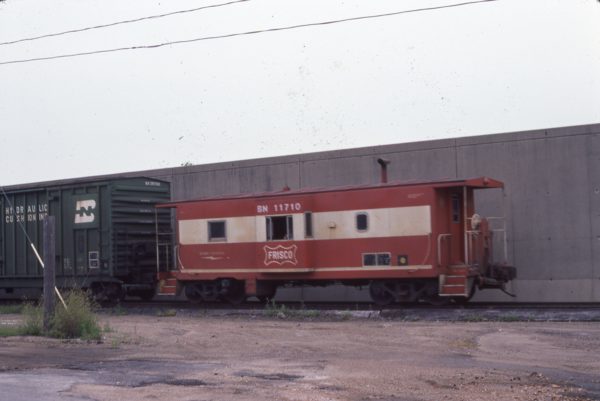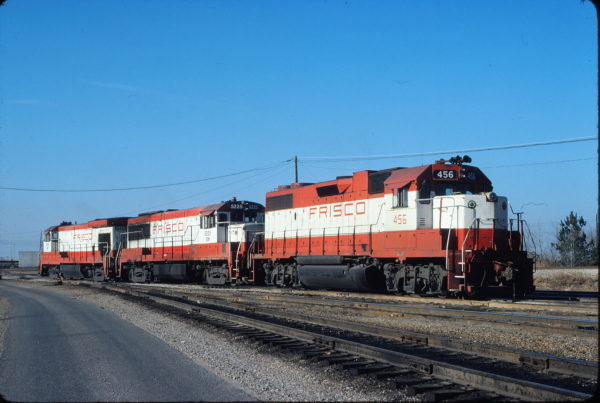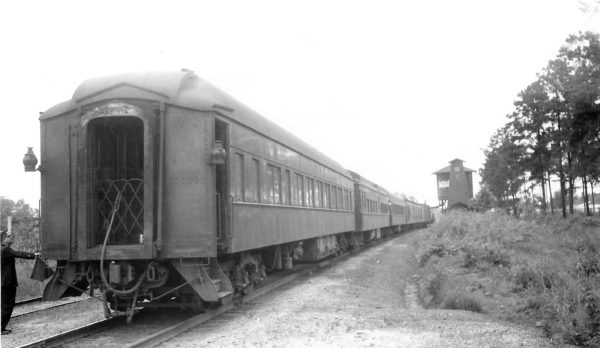
Caboose 11710 (Frisco 1735) at Cape Girardeau, Mo in July 1982 (Jim Hoops).

GP38-2 456, U25B 5225 (Frisco 823) and B30-7 5490 (Frisco 868) at Memphis, Tennessee on December 20, 1980 (David Johnston).

Pullman Sleeper Car Whipple at Atmore, Oklahoma on May 30, 1949 (Arthur B. Johnson).